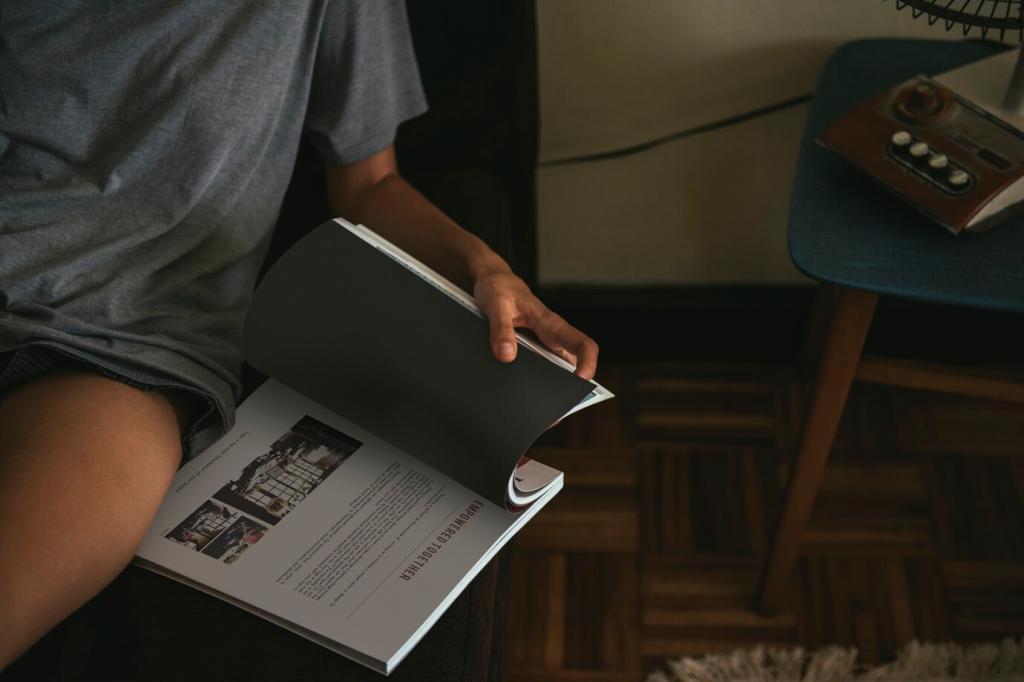Telling Stories with Sustainable Design Choices
Chosen theme: Telling Stories with Sustainable Design Choices. Explore how every eco-conscious decision becomes a narrative thread that connects purpose, people, and place—inviting your audience to care, act, and subscribe for more story-led sustainability insights.
Why Stories Matter in Sustainable Design

A neighborhood café switched to ceramic mugs after staff shared a sea turtle rescue story at the counter. That vivid moment, not a spreadsheet, changed habits. Your projects can spark similar shifts when choices are framed as human, hopeful episodes.
Materials with Memory
A community library table built from a fallen elm kept its old nail holes like freckles. Visitors traced the scars, then read the tree’s timeline etched beneath. That tactile history turned a surface into a conversation that never quite ends.
Hemp and flax fabrics whisper of resilient crops, low water needs, and regenerative fields. When tags explain the soil benefits and farmer partnerships, wearers feel connected to landscapes. Encourage readers to share garments that make them feel grounded in nature.
A plaza paved with regional limestone doubles as geography you can walk. Wayfinding markers tie strata and fossils to nearby hills, turning daily commutes into field trips. Ask your audience which local material could map their own hometown stories.
Longevity as a Love Story
01
Repairability Becomes Ritual
A lamp with a tiny toolkit tucked in its base turns maintenance into ceremony. The first time a shade is replaced, pride replaces anxiety. Design for repair and teach the ritual, and users will brag about caring rather than discarding.
02
Timeless Form, Evolving Function
A modular shelf starts in a nursery, grows into a studio, and retires as a hallway display. Gentle proportions age gracefully, while components adapt. That narrative of continuity anchors people through life’s changes while curbing the impulse to rebuy.
03
Emotional Durability, Not Disposable Drama
When objects reflect personal values—respect for craft, care for ecosystems—they feel worth keeping. A humble ceramic cup inscribed with a potter’s initials can outlast trendier options. Invite readers to post one emotionally durable item that still makes them smile.
Data as Story, Not Just Digits
Let Carbon, Water, and Energy walk on stage as three protagonists facing challenges together. With arcs and turning points, audiences grasp trade-offs quickly. This theatrical framing helps teams remember the stakes—and act on them—long after the meeting ends.

Co‑creating with Community
Listening Before Designing
In a coastal town, residents asked for shade that doubled as seabird habitat. Designers responded with canopies seeded for nesting. Because the story started with listening, people protected the structures fiercely. Invite readers to propose the first question they’d ask locals.
Suppliers as Co‑authors
Invite fabricators to tell their part of the story—waste capture, safer chemistry, fair wages. Featuring their voices humanizes the supply chain and uncovers innovations. Encourage your network to tag a supplier whose behind-the-scenes efforts deserve a spotlight.
Workshops That Seed Ownership
Hands-on sessions where participants assemble prototypes create instant rapport with materials and missions. People leave with fingerprints on the outcome—and a reason to defend it. Ask readers if they’d join a future session, and prompt them to subscribe for dates.
Show and Tell: Communicating the Sustainable Narrative
01
Swap glossy perfection for real moments: dye vats, mending stitches, solar arrays at dawn. Process photos earn credibility and curiosity. Invite your audience to vote on which images best explain the sustainable choice without a single caption.
02
Minimal ink, recycled fibers, and a short note about origins can turn an unboxing into an education. QR codes deepen the plot with farm interviews and repair guides. Encourage readers to scan, share, and suggest what chapter to add next.
03
Break the project into episodes: sketch, source, prototype, test, iterate, launch, learn. Each installment invites feedback and builds momentum. Ask followers to subscribe for the next chapter, and invite them to predict the twist your team should explore.
